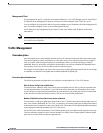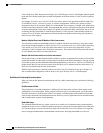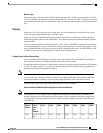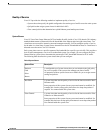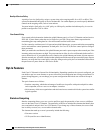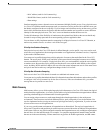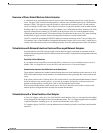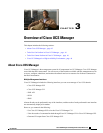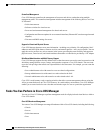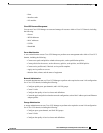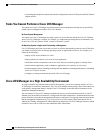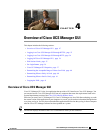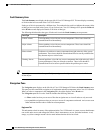
Overview of Cisco Virtual Machine Fabric Extender
A virtualized server implementation consists of one or more VMs running as 'guests' on a single physical
server. The guest VMs are hosted and managed by a software layer called the hypervisor or virtual machine
manager (VMM). The hypervisor typically presents a virtual network interface to each VM and performs
Layer 2 switching of traffic from a VM to other local VMs or to a physical interface to the external network.
Working with a Cisco virtual interface card (VIC) adapter, Cisco Virtual Machine Fabric Extender (VM-FEX)
bypasses software-based switching of VM traffic by the hypervisor in favor of external hardware-based
switching in the fabric interconnect. This method results in a reduced load on the server CPU, faster switching,
and the ability to apply a rich set of network management features to local and remote traffic.
VM-FEX extends the (prestandard) IEEE 802.1Qbh port extender architecture to the VMs, providing each
VM interface with a virtual Peripheral Component Interconnect Express (PCIe) device and a virtual port on
a switch. This solution allows precise rate limiting and quality of service (QoS) guarantees on the VM interface.
Virtualization with Network Interface Cards and Converged Network Adapters
Network interface card (NIC) and converged network adapters support virtualized environments with the
standard VMware integration with ESX installed onthe server andall virtualmachine management performed
through the VC.
Portability of Virtual Machines
If you implement service profiles you retain the ability to easily move a server identity from one server to
another. After you image the new server, the ESX treats that server as if it were the original.
Communication between Virtual Machines on the Same Server
These adapters implement the standard communications between virtual machines on the same server. If an
ESX host includes multiple virtual machines, all communications must go through the virtual switch on the
server.
If the system uses the native VMware drivers, the virtual switch is out of the network administrator's domain
and is not subject to any network policies. As a result, for example, QoS policies on the network are not
applied to any data packets traveling from VM1 to VM2 through the virtual switch.
If the system includes another virtual switch, such as the Nexus 1000, that virtual switch is subject to the
network policies configured on that switch by the network administrator.
Virtualization with a Virtual Interface Card Adapter
A Cisco VIC adapter, such as the Cisco UCS M81KR Virtual Interface Card, is a converged network adapter
(CNA) designed for both single-OS and VM-based deployments. The VIC adapter supports static or dynamic
virtualized interfaces, including up to 128 virtual network interface cards (vNICs).
VIC adapters support VM-FEX to provide hardware-based switching of traffic to and from virtual machine
interfaces.
Cisco UCS Manager GUI Configuration Guide, Release 2.0
OL-25712-04 41
Virtualization in Cisco UCS



